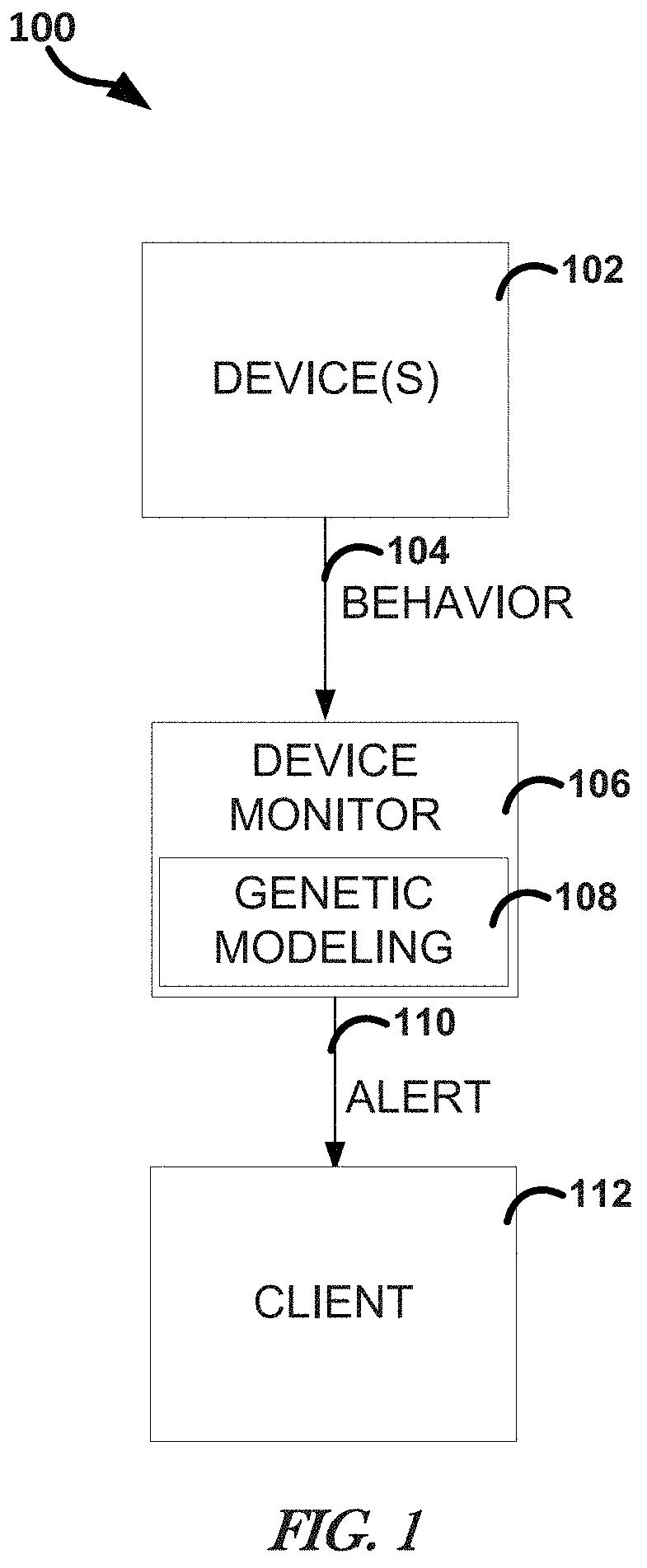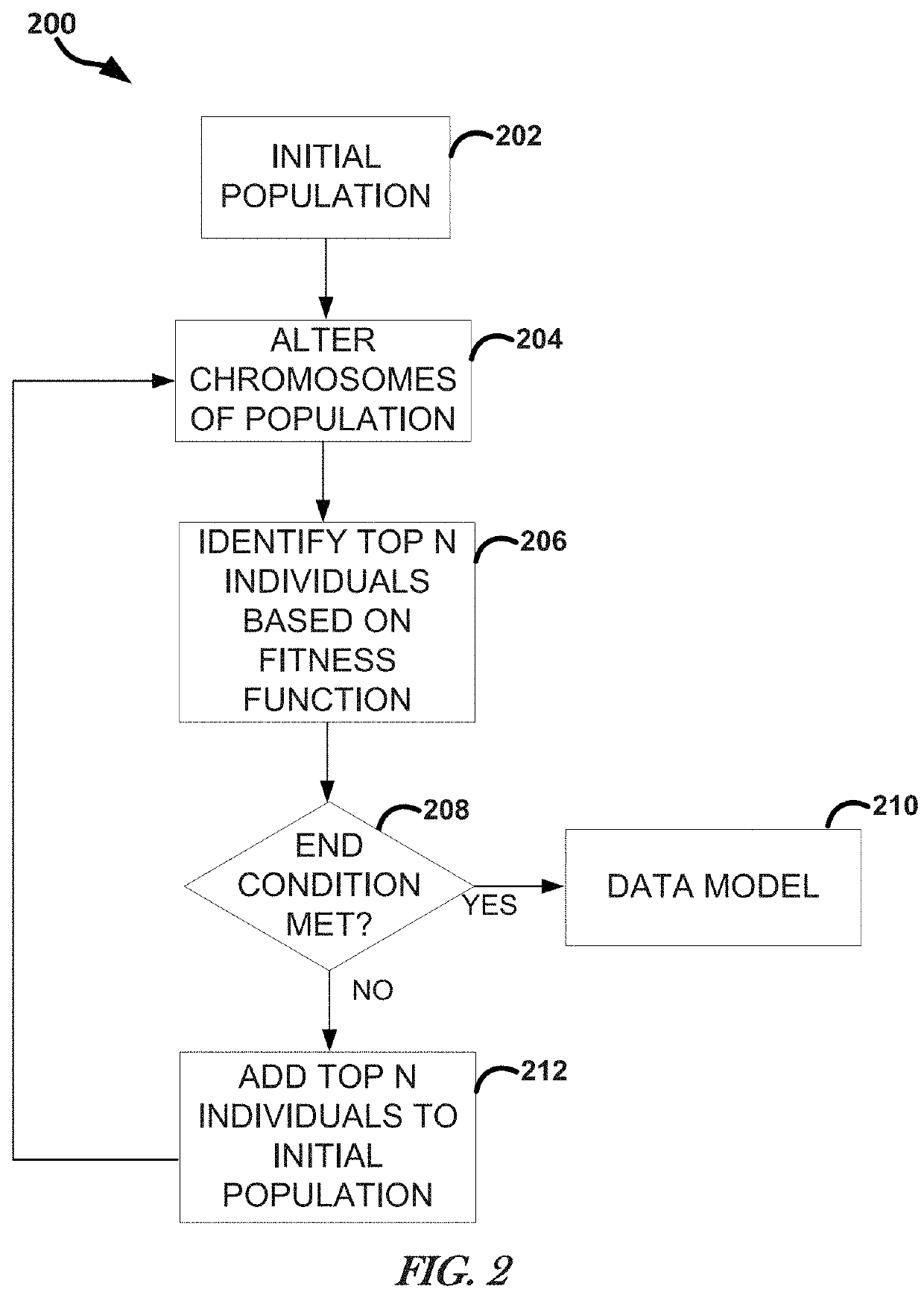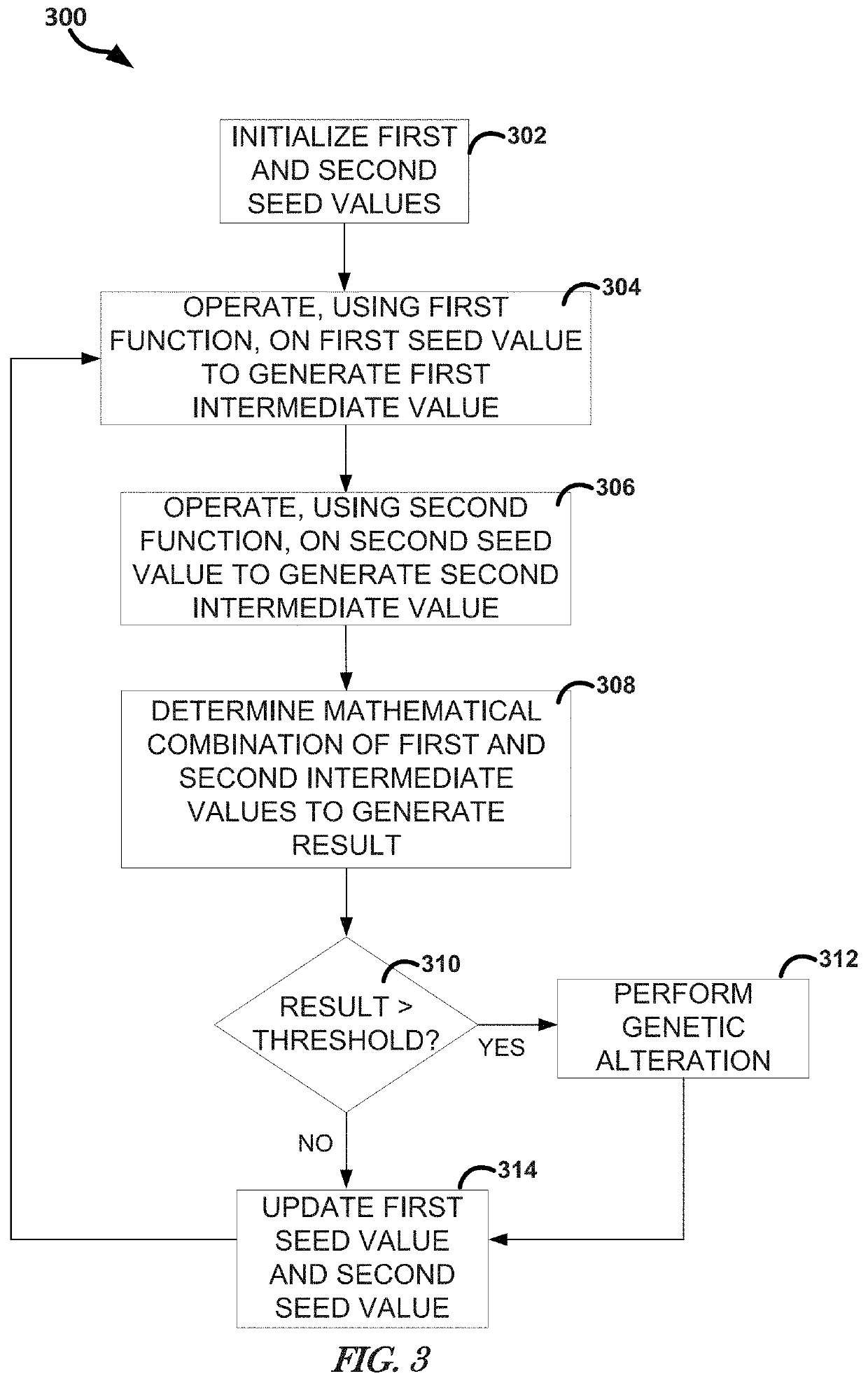Gene expression programming
a gene expression and programming technology, applied in the field of behavior monitoring, can solve problems such as difficult prediction, difficult modeling of system state, and current data modeling solutions that are woefully incapable of modeling complex system behavior
- Summary
- Abstract
- Description
- Claims
- Application Information
AI Technical Summary
Benefits of technology
Problems solved by technology
Method used
Image
Examples
example 1
[0192 includes a technique for behavior monitoring of a device, the technique comprising receiving data indicating behaviors of the device, determining, using a gene expression programming (GEP) method, a data model that explains the data, and comparing further data indicating further behavior of the device to the data model to determine whether the further behavior is explained by the data model.
[0193]In Example 2, Example 1 further includes, wherein the GEP method includes determining whether to perform an alteration of an individual of a population based on a first seed value, a second seed value, a first function, and a second different function.
[0194]In Example 3, Example 2 further includes, wherein the second function is orthogonal to the first function.
[0195]In Example 4, Example 3 further includes, wherein the first and second functions are cyclic.
[0196]In Example 5, Example 4 further includes, wherein the first and second functions are periodic.
[0197]In Example 6, Example 5...
PUM
| Property | Measurement | Unit |
|---|---|---|
| threshold | aaaaa | aaaaa |
| power | aaaaa | aaaaa |
| mathematical structure | aaaaa | aaaaa |
Abstract
Description
Claims
Application Information
 Login to View More
Login to View More - R&D
- Intellectual Property
- Life Sciences
- Materials
- Tech Scout
- Unparalleled Data Quality
- Higher Quality Content
- 60% Fewer Hallucinations
Browse by: Latest US Patents, China's latest patents, Technical Efficacy Thesaurus, Application Domain, Technology Topic, Popular Technical Reports.
© 2025 PatSnap. All rights reserved.Legal|Privacy policy|Modern Slavery Act Transparency Statement|Sitemap|About US| Contact US: help@patsnap.com



